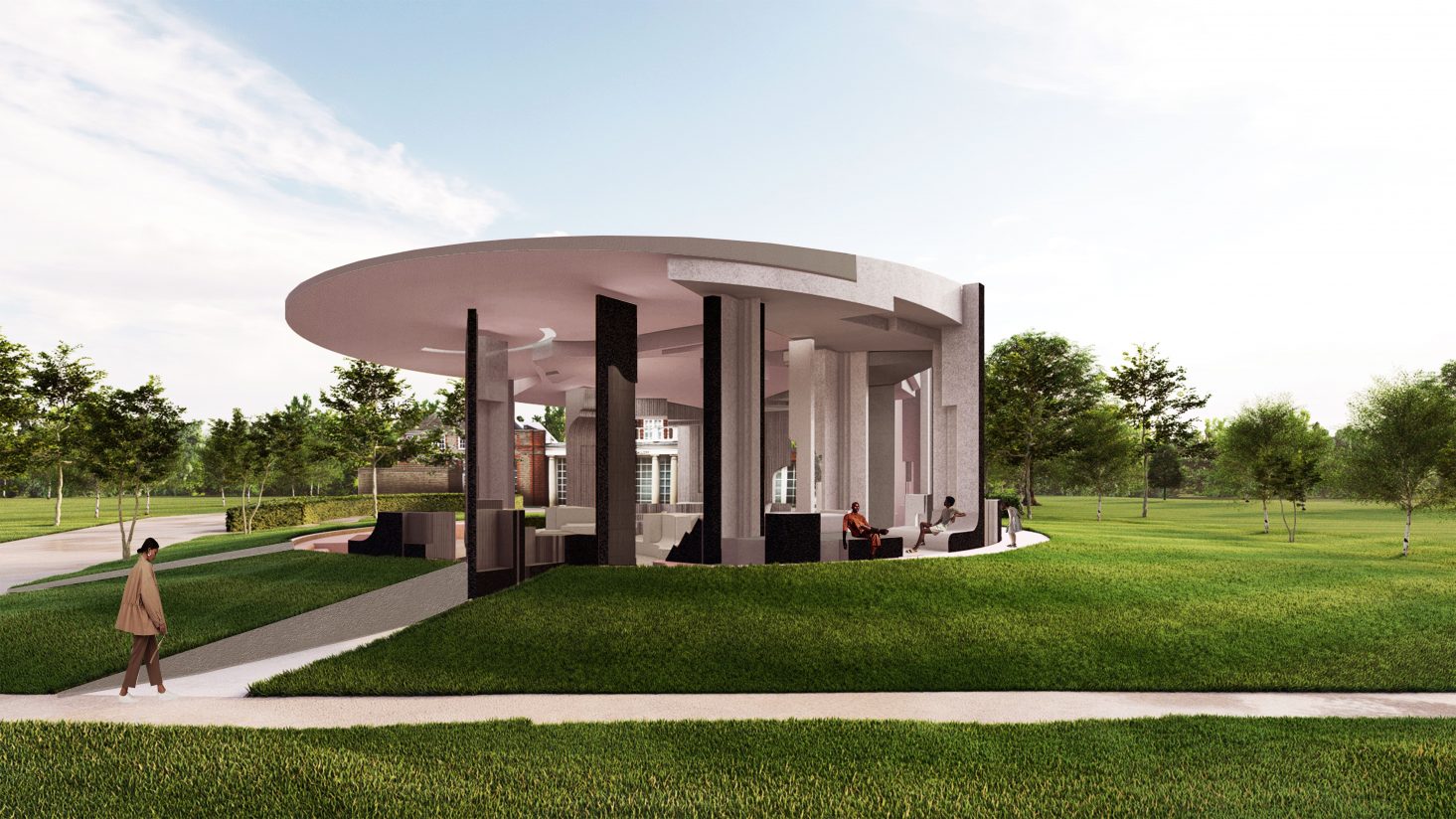The 2020 Serpentine Pavilion to be built with Sustainable Materials
Johannesburg-based practice Counterspace, directed by an all-woman team, has been selected to design the Serpentine Pavilion 2020 and their design is a coming together of a variety of forms from across London over the course of the Pavilion’s sojourn.
All three women of Counterspace, Sumayya Vally, Sarah de Villiers, and Amina Kaskar were born in 1990 and are the youngest ever architects to be commissioned for the Serpentine Pavilion, internationally renowned architecture program, now in its 20th year.
Using both innovative and traditional building techniques, Counterspace’s design will be based on gathering spaces and community places around the city, folding London into the Pavilion structure in Kensington Gardens, and extending a public program across London. The shapes of the Pavilion are created from a process of addition, superimposition, subtraction, and splicing of architectural forms, directly transcribed from existing spaces with particular relevance to migrant and other peripheral communities in London.
On its 20th anniversary, more than ever, the Serpentine Pavilion will be a place for debate and new ideas, according to the PR team of the Pavilion. A live program running throughout the summer will connect Serpentine’s ambitious multi-platform project Back to Earth and explore questions such as: how can architecture create a space where we are all linked, not ranked? How can architecture promote wellbeing? Can a structure evolve and change together with the environment?
The Pavilion will include moveable small parts that will be displaced to neighborhoods across London. Following community events at these locations, the parts will be returned to the structure, completing it over the summer.
Employing a mix of low-tech and high-tech approaches to sustainability, the Pavilion will be constructed from a variety of materials, including custom K-Briq-modules and cork provided by Amorim. K-Briqs are made from 90% recycled construction and demolition waste and are manufactured without firing, with a tenth of the carbon emissions of normal bricks.
The lead architect on the project, Sumayya Vally of Counterspace, said of the design: “The pavilion is itself conceived as an event — the coming together of a variety of forms from across London over the course of the Pavilion’s sojourn. These forms are imprints of some of the places, spaces, and artifacts which have made care and sustenance part of London’s identity. The breaks, gradients, and distinctions in color and texture between different parts of the Pavilion make this reconstruction and piecing together legible at a glance. As an object, experienced through movement, it has continuity and consistency, but difference and variation are embedded into the essential gesture at every turn. Places of memory and care in Brixton, Hoxton, Hackney, Whitechapel, Edgware Road, Peckham, Ealing, North Kensington and beyond are transferred onto the Serpentine lawn. Where they intersect, they produce spaces to be together.”

Interior visualisation of Counterspace’s Pavilion design
Counterspace is a Johannesburg-based collaborative architectural studio, directed by Sumayya Vally, Sarah de Villiers and Amina Kaskar, founded in Johannesburg in 2015. Much of their work emerges from research and interdisciplinary arts-based projects, undertaking predominantly architectural projects, community engagement, exhibition, and installation conceptualization and urban research, design, and intervention. Their work is influenced by ideas towards inclusivity, otherness, and future; and often intersects with other creative disciplines in the formation of innovative approaches to design challenges.

The 2016 Serpentine Pavilion by BIG founder Bjarke Ingels is a wall of translucent blocks that was “unzipped” to create a curving, cavernous interiors.
Counterspace is the 20th practice to accept the invitation to design a temporary Pavilion on the Serpentine Gallery’s lawn in Kensington Gardens. This pioneering commission, which began in 2000 with Zaha Hadid, has presented the first UK structures by some of the biggest names in international architecture. In recent years it has grown into a highly-anticipated showcase for emerging talent, from Frida Escobedo of Mexico to Francis Kéré of Burkina Faso and Bjarke Ingels of Denmark, whose 2016 Pavilion was the most visited architectural and design exhibition in the world. The Pavilion program has evolved over 20 years as a commissioning platform for the Serpentine’s experimental, interdisciplinary live, community and family programs.
Serpentine Galleries Artistic Director Hans Ulrich Obrist and CEO Bettina Korek selected this year’s architect with advisors Sir David Adjaye OBE, Lesley Lokko and David Glover alongside the Serpentine team – Julie Burnell (Head of Construction and Buildings) and the project’s curator Natalia Grabowska.
The Serpentine Pavilion 2020 is supported by Goldman Sachs for the sixth year.

The first Serpentine Pavilion was designed by Zaha Hadid in 2000 and she renovated the old brick building already present to create new gallery spaces, then added a curving cafe and events space that extends from one side.
The Serpentine celebrates its 50th anniversary in 2020. Championing the possibilities of new ideas in contemporary art since opening in 1970, the Serpentine has presented pioneering exhibitions for half a century, showing a wide range of work from emerging practitioners to the most internationally recognized artists of our time, providing a place for them to experiment and an open platform for them to be seen and heard.
Counterspace is a Johannesburg-based collaborative architectural studio, undertaking predominantly architectural projects, community engagement, exhibition and installation conceptualization, and urban research and design.





